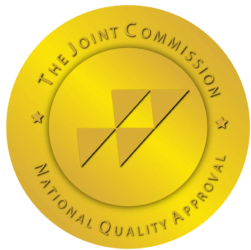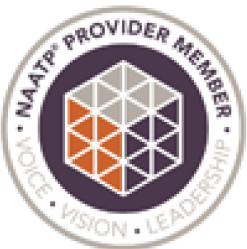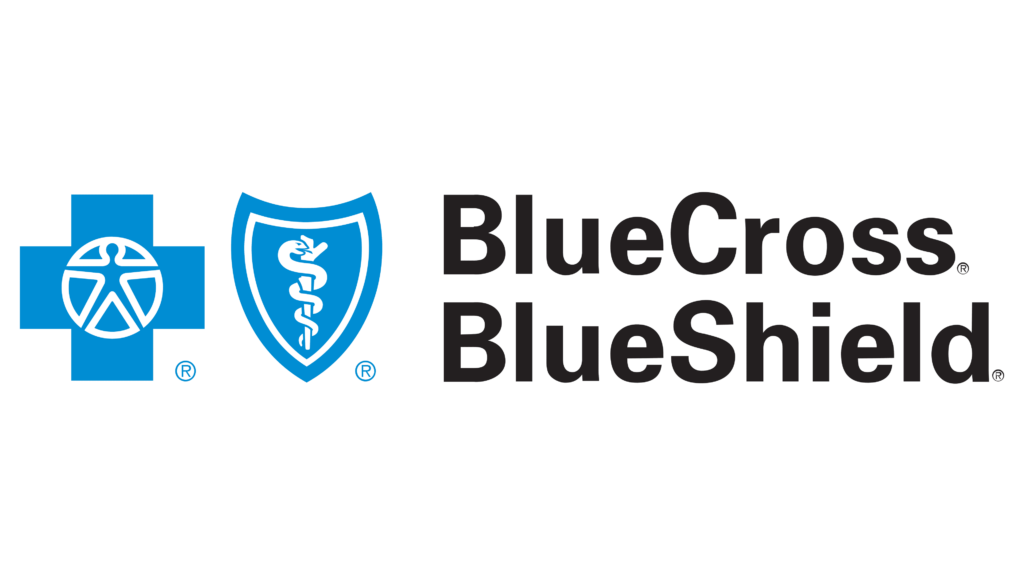Methamphetamine is a highly addictive and dangerous stimulant drug that poses significant health risks regardless of its appearance. It comes in various colors and forms, influenced by production methods and the chemicals used during manufacturing. While meth’s color and form can sometimes provide clues about its origin and composition, these variations also reflect the unpredictability of this illicit substance. Understanding its appearance is essential for raising awareness, identifying potential dangers, and promoting harm reduction.
In its purest form, methamphetamine is typically colorless or white and resembles crystalline shards. This pure version is highly potent and free of the impurities often found in street meth. However, pure methamphetamine is rare outside of controlled laboratory settings. The meth found on the streets is frequently adulterated with chemicals and cutting agents, leading to a wide spectrum of colors, including clear, white, off-white, yellow, brown, orange, gray, and pink.
Crystal meth, often regarded as the most potent form of the drug, has a distinct, shiny, glass-like appearance, resembling fragments of rock salt. Its translucent or bluish-white hue is iconic, but these colors can vary depending on the production process and the substances added. This form of meth is typically smoked or injected, delivering an intense and immediate high that significantly increases its addictive potential and associated risks.
Powdered meth is another common form and typically appears as a fine, chalky substance. Its color can range from white to off-white, with occasional shades of yellow or pink depending on the chemicals and additives used during production. Powdered meth is often snorted, swallowed, or dissolved for injection, with effects that vary based on the method of use.
The color of methamphetamine is primarily determined by the materials and chemicals used during its production. For example, when red pseudoephedrine tablets are used as a precursor in the manufacturing process, the resulting methamphetamine may have a pink or reddish tint. Similarly, solvents such as camping stove fuel, iodine, or industrial cleaners can impart colors like blue, yellow, or brown to the final product.
These color variations are not indicators of potency or safety. Instead, they reflect the presence of impurities and contaminants introduced during the production process. Methamphetamine is often produced in unregulated and unsafe environments, where the focus is on creating a sellable product rather than ensuring purity or quality. The presence of these impurities can exacerbate the already significant health risks associated with meth use.
The notion of blue meth as a symbol of purity and potency is largely fictional, perpetuated by popular media. Television shows have glamorized the idea of blue meth, leading to widespread misconceptions about its quality. In reality, pure methamphetamine is colorless or white. Blue-tinted meth is typically the result of dyes or chemical additives used during production, which do not enhance its purity or effectiveness.
Understanding the truth behind this myth is critical for dispelling misinformation and promoting accurate education about the dangers of methamphetamine. Regardless of its color, meth is a dangerous and highly addictive substance that poses significant health risks to users.
Methamphetamine is hazardous in all its forms, and its use carries severe short-term and long-term health consequences. In the short term, meth use can cause increased heart rate, elevated blood pressure, rapid breathing, and a rise in body temperature. These physical effects are often accompanied by heightened energy levels, hyperactivity, and feelings of euphoria, which contribute to the drug’s addictive nature.
Long-term meth use is associated with devastating physical and psychological damage. Chronic users frequently suffer from cardiovascular issues, severe dental decay (commonly referred to as “meth mouth”), and skin problems caused by repetitive scratching or poor hygiene. Methamphetamine can also cause persistent psychotic symptoms, including paranoia, hallucinations, and delusions, which may persist even after discontinuing use.
The impurities in street meth, regardless of its color, can exacerbate these risks, introducing additional toxic substances that further harm the body and mind. Meth use also significantly increases the risk of overdose, which can be fatal in severe cases.
Methamphetamine’s risks extend beyond individual use. Properties where meth has been manufactured or consumed can become contaminated with toxic residues that pose health hazards to occupants. These residues are often invisible but can cause significant respiratory, skin, and neurological issues, particularly for children and vulnerable individuals.
Signs of meth contamination in a property may include persistent chemical odors, unusual staining or discoloration on walls and surfaces, and unexplained respiratory or skin irritations among residents. Proper testing and professional remediation are essential to ensure that contaminated environments are made safe again.
Asana Recovery works with most PPO plans, covering up to 100%. See if your insurance can help fund your journey. Click below to get a free quote.

Recovering from methamphetamine addiction is challenging but achievable with the right support and resources. Professional treatment centers provide comprehensive care that addresses both the physical and psychological aspects of addiction. Treatment typically begins with detoxification, a medically supervised process that manages withdrawal symptoms and stabilizes the individual.
Behavioral therapies, such as cognitive-behavioral therapy (CBT), play a crucial role in addressing the underlying causes of addiction and equipping individuals with healthier coping mechanisms. Long-term support strategies, including counseling, peer support groups, and relapse prevention planning, are essential for maintaining sobriety and ensuring lasting recovery.
Methamphetamine addiction is a serious condition that affects not only the individual but also their loved ones and community. Recovery is possible with proper intervention, education, and support. Treatment centers offer tailored programs designed to meet the unique needs of each individual, providing the tools and resources necessary for long-term success.
Regardless of its appearance—whether clear, white, pink, or blue—methamphetamine remains a dangerous substance with profound health consequences. Prioritizing awareness and access to treatment is essential for combating the devastating effects of meth addiction and promoting a healthier, drug-free future.
If you or someone you know is struggling with meth use, reach out to a professional treatment center today. Support is available, and recovery is within reach
Understanding methamphetamine’s colors and forms is just one part of addressing the dangers of this addictive substance. At Asana Recovery, we provide comprehensive treatment programs designed to help individuals break free from meth addiction and reclaim their lives. Our evidence-based approach combines medical detox, personalized therapy, and ongoing support to address both the physical and emotional challenges of recovery.
If you or someone you love is struggling with meth use, don’t wait. Reach out to Asana Recovery today to learn how our compassionate team can guide you on the path to sobriety. Recovery is possible, and it starts with taking that first step. Contact us now and begin your journey toward a healthier, brighter future.
We get it. Addiction recovery is tough. That’s why our programs are founded and staffed by people in recovery – people who truly understand.
The color of methamphetamine is heavily influenced by the substances and chemicals used during its production. Meth is rarely pure in its street form; instead, it is often adulterated with additives, contaminants, and cutting agents that alter its appearance. For example, when red pseudoephedrine tablets are used as a precursor, the resulting methamphetamine may take on a pink or reddish tint. Similarly, solvents such as iodine, lithium, or camping stove fuel can contribute to yellow, brown, or even bluish hues in the finished product. These color changes are not indicators of potency or safety but rather reflect the impurities present. Additives used to bulk up meth or disguise its appearance can also introduce additional health risks, as many of these substances are toxic or harmful when consumed.
Regardless of its color, methamphetamine is a dangerous drug with severe health implications. However, the presence of impurities or additives in meth of varying colors can exacerbate these risks. For instance, brightly colored meth might contain dyes or other non-psychoactive substances that can irritate the lungs, skin, or digestive system. Meth that appears brown, yellow, or orange often contains chemical byproducts from the production process, which may increase its toxicity.
The impurities in colored meth can lead to unpredictable side effects, including heightened cardiovascular strain, respiratory distress, or allergic reactions. In addition to the health risks posed by the meth itself, the toxic additives used in its production can damage organs, worsen addiction-related complications, and increase the likelihood of overdose. Understanding that the color of meth does not make it safer or more dangerous in terms of its psychoactive properties is essential, but the contaminants in colored variants add another layer of risk.
Methamphetamine comes in several distinct forms, each with unique characteristics. The crystalline form, often referred to as crystal meth, is the most visually recognizable. It resembles shards of glass or rock salt, typically clear or bluish-white but sometimes yellow or pink depending on the chemicals used during production. Crystal meth is most commonly smoked or injected, providing a fast-acting and intense high.
Powdered meth, in contrast, appears as a fine, chalky substance that can range in color from white to off-white and occasionally yellow or pink. Powdered meth is usually snorted, swallowed, or dissolved for injection, with slightly less potent effects compared to its crystalline counterpart.
Other forms include pill versions of methamphetamine, often found in illegal street markets or prescribed as Desoxyn, a legal medical form of methamphetamine used to treat ADHD in specific cases. Recognizing meth in its various forms requires an understanding of its typical textures, colors, and packaging. However, visual identification alone is not always reliable, and professional analysis is often required to confirm its composition.
Methamphetamine is known by numerous street names, reflecting its widespread use and availability in different forms. Common names include “crystal,” “crystal meth,” “ice,” “glass,” and “shards,” referring to its crystalline appearance. Powdered meth may be called “speed,” “chalk,” or simply “meth.” Other slang terms like “crank” or “tweak” are often used in specific regions or subcultures.
Methamphetamine pills, particularly those resembling prescription drugs, may be referred to as “Yaba” in Southeast Asia or other regionally specific names. Familiarity with these terms is essential for recognizing conversations or contexts where meth use may be involved. However, it is important to approach these situations with sensitivity and avoid making assumptions based solely on language.
The differences between powdered meth and crystal meth are both visual and functional. Crystal meth appears as shiny, glass-like shards or rocks, often translucent with a bluish or white hue. Its crystalline structure is the result of a manufacturing process that produces a highly potent and concentrated form of methamphetamine. Crystal meth is most commonly smoked or injected, leading to rapid absorption and an intense high.
Powdered meth, by contrast, is less concentrated and appears as a fine, granular substance. It may look similar to chalk dust or powdered sugar and can range from white to off-white, yellow, or pink depending on its purity and additives. Powdered meth is typically snorted, swallowed, or injected after being dissolved in liquid. While less potent than its crystalline counterpart, powdered meth still carries significant risks, including addiction and severe health complications.
Understanding these differences is important for identifying methamphetamine and recognizing the risks associated with its various forms. Whether crystal or powder, methamphetamine is a dangerous drug that poses significant health challenges and long-term consequences for users.
Take your first step towards lasting recovery. At Asana, we offer effective, insurance-covered treatment for addiction and mental health, guided by experts who understand because they’ve been there. Start your healing today.

This book has helped so many men and women; and we want to give it you for FREE. Get signed up today and discover how to unlock the grip of addiction and get back to living your best life.
In this book, you’ll discover…
— The Most Common Misconceptions About Addiction and Rehab
— Why Rock Bottom is a Myth and What You Can Do About It
–The Steps to Healing From Trauma, Both Mentally and Emotionally
–And much more!

Asana Recovery is licensed and certified by the State Department of Health Care Services.


© Copyright 2024 Asana Recovery™ | All Rights Reserved | Privacy Policy
You could save up to 100% of your treatment using your Insurance.





Asana Recovery
We firmly believe that the internet should be available and accessible to anyone, and are committed to providing a website that is accessible to the widest possible audience, regardless of circumstance and ability.
To fulfill this, we aim to adhere as strictly as possible to the World Wide Web Consortium’s (W3C) Web Content Accessibility Guidelines 2.1 (WCAG 2.1) at the AA level. These guidelines explain how to make web content accessible to people with a wide array of disabilities. Complying with those guidelines helps us ensure that the website is accessible to all people: blind people, people with motor impairments, visual impairment, cognitive disabilities, and more.
This website utilizes various technologies that are meant to make it as accessible as possible at all times. We utilize an accessibility interface that allows persons with specific disabilities to adjust the website’s UI (user interface) and design it to their personal needs.
Additionally, the website utilizes an AI-based application that runs in the background and optimizes its accessibility level constantly. This application remediates the website’s HTML, adapts Its functionality and behavior for screen-readers used by the blind users, and for keyboard functions used by individuals with motor impairments.
If you’ve found a malfunction or have ideas for improvement, we’ll be happy to hear from you. You can reach out to the website’s operators by using the following email
Our website implements the ARIA attributes (Accessible Rich Internet Applications) technique, alongside various different behavioral changes, to ensure blind users visiting with screen-readers are able to read, comprehend, and enjoy the website’s functions. As soon as a user with a screen-reader enters your site, they immediately receive a prompt to enter the Screen-Reader Profile so they can browse and operate your site effectively. Here’s how our website covers some of the most important screen-reader requirements, alongside console screenshots of code examples:
Screen-reader optimization: we run a background process that learns the website’s components from top to bottom, to ensure ongoing compliance even when updating the website. In this process, we provide screen-readers with meaningful data using the ARIA set of attributes. For example, we provide accurate form labels; descriptions for actionable icons (social media icons, search icons, cart icons, etc.); validation guidance for form inputs; element roles such as buttons, menus, modal dialogues (popups), and others. Additionally, the background process scans all the website’s images and provides an accurate and meaningful image-object-recognition-based description as an ALT (alternate text) tag for images that are not described. It will also extract texts that are embedded within the image, using an OCR (optical character recognition) technology. To turn on screen-reader adjustments at any time, users need only to press the Alt+1 keyboard combination. Screen-reader users also get automatic announcements to turn the Screen-reader mode on as soon as they enter the website.
These adjustments are compatible with all popular screen readers, including JAWS and NVDA.
Keyboard navigation optimization: The background process also adjusts the website’s HTML, and adds various behaviors using JavaScript code to make the website operable by the keyboard. This includes the ability to navigate the website using the Tab and Shift+Tab keys, operate dropdowns with the arrow keys, close them with Esc, trigger buttons and links using the Enter key, navigate between radio and checkbox elements using the arrow keys, and fill them in with the Spacebar or Enter key.Additionally, keyboard users will find quick-navigation and content-skip menus, available at any time by clicking Alt+1, or as the first elements of the site while navigating with the keyboard. The background process also handles triggered popups by moving the keyboard focus towards them as soon as they appear, and not allow the focus drift outside it.
Users can also use shortcuts such as “M” (menus), “H” (headings), “F” (forms), “B” (buttons), and “G” (graphics) to jump to specific elements.
We aim to support the widest array of browsers and assistive technologies as possible, so our users can choose the best fitting tools for them, with as few limitations as possible. Therefore, we have worked very hard to be able to support all major systems that comprise over 95% of the user market share including Google Chrome, Mozilla Firefox, Apple Safari, Opera and Microsoft Edge, JAWS and NVDA (screen readers).
Despite our very best efforts to allow anybody to adjust the website to their needs. There may still be pages or sections that are not fully accessible, are in the process of becoming accessible, or are lacking an adequate technological solution to make them accessible. Still, we are continually improving our accessibility, adding, updating and improving its options and features, and developing and adopting new technologies. All this is meant to reach the optimal level of accessibility, following technological advancements. For any assistance, please reach out to